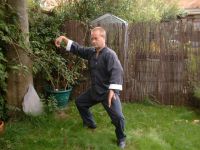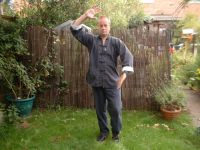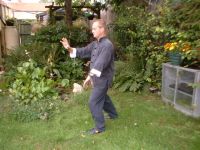Classical Yang Style - Short Form
Tai Chi is a Chinese martial art appreciated widely for its power, beauty and benefits for health, well-being and self-awareness. Tai chi is taught in these classes with much emphasis on posture and balance. It is largely non-contact but the martial defence elements behind every movement are explained to help with their learning.
"Tai Chi is a series of continuous, flowing movements which are performed slowly and gracefully. The form is learnt gradually, posture by posture. By working from the mind through natural movements of the body we learn to appreciate the importance of posture, to understand relaxation, to interpret energy and to apply this knowledge to our everyday lives."
The following videos are intended to help students with their practice only. They cannot replace what is learnt by attending a course with a qualified instructor. These first 2 videos complete the first section only or mini form.
These notes, written by me (Ian, not Tony) describe the moves in brief for the whole form. Along with the videos they are intended to help students with their practice only. They cannot replace what is learnt by attending a course with a qualified instructor.
I have been learning Tai Chi in its various forms as a student of Tony's since before the turn of the century. I have found that Tai Chi is not just standing there waving your hands around like you may have seen it to so appear on television or the many videos on the internet. Tony tends to emphasise the stability, posture and self-defence aspects of this martial art. Every movement has a unique purpose, which I find makes it easier to remember and to perform properly; it looks so much better too. If you are interested, never tried it before or already take part in any of the other martial arts then a course with Tony is highly recommended.
Classical Yang Style Tai Chi Chuan Short FormThe text in blue shows the repeated 'Grasp sparrows tail' routine. |
|
|
|
"Remember, when moving, there is no place that doesn't move. When still, there is no place that isn't still." (Tai Chi Classics)




